OPEN A CONVERSATION WITH ALICE SAKULMA, OWNER OF MOA STUDIO, AN INTERIOR DESIGN STUDIO WITH A MAXIMALIST STYLE, BOLD USE OF COLOR, AND INNOVATIVE MATERIALS THAT REFLECT A UNIQUE IDENTITY
TEXT: CHIWIN LAOKETKIT
PHOTO: SUKIT SUDNAN EXCEPT AS NOTED
(For Thai, press here)
MOA Studio may be a relatively new name in the interior design scene, but its diverse portfolio already spans an impressive portfolio of projects—including cafés, restaurants, bars, residences, and even office spaces. What sets MOA Studio apart is its distinctive approach, one that challenges conventional design norms. At the helm is Alice Sakulma, an architect and interior designer who deliberately steers away from the prevailing wave of minimalist design, embracing instead the philosophy of ‘more is more’ through the expressive world of maximalist design. Her signature style seamlessly merges classic design principles with bold, eye-catching colors, culminating in a contemporary interior aesthetic that is uniquely her own—and by extension, that of MOA Studio.
In this conversation with art4d, Alice Sakulma reflects on her journey in interior design, her creative process, and what it means to work in a maximalist style in an era dominated by minimalism. Set against the vibrant and inspiring atmosphere of MOA Studio in Sathorn, the discussion offers a glimpse into her design philosophy, insights on color experimentation, material selection from a diverse range of sources—including local materials from Thailand—and her vision for the future.
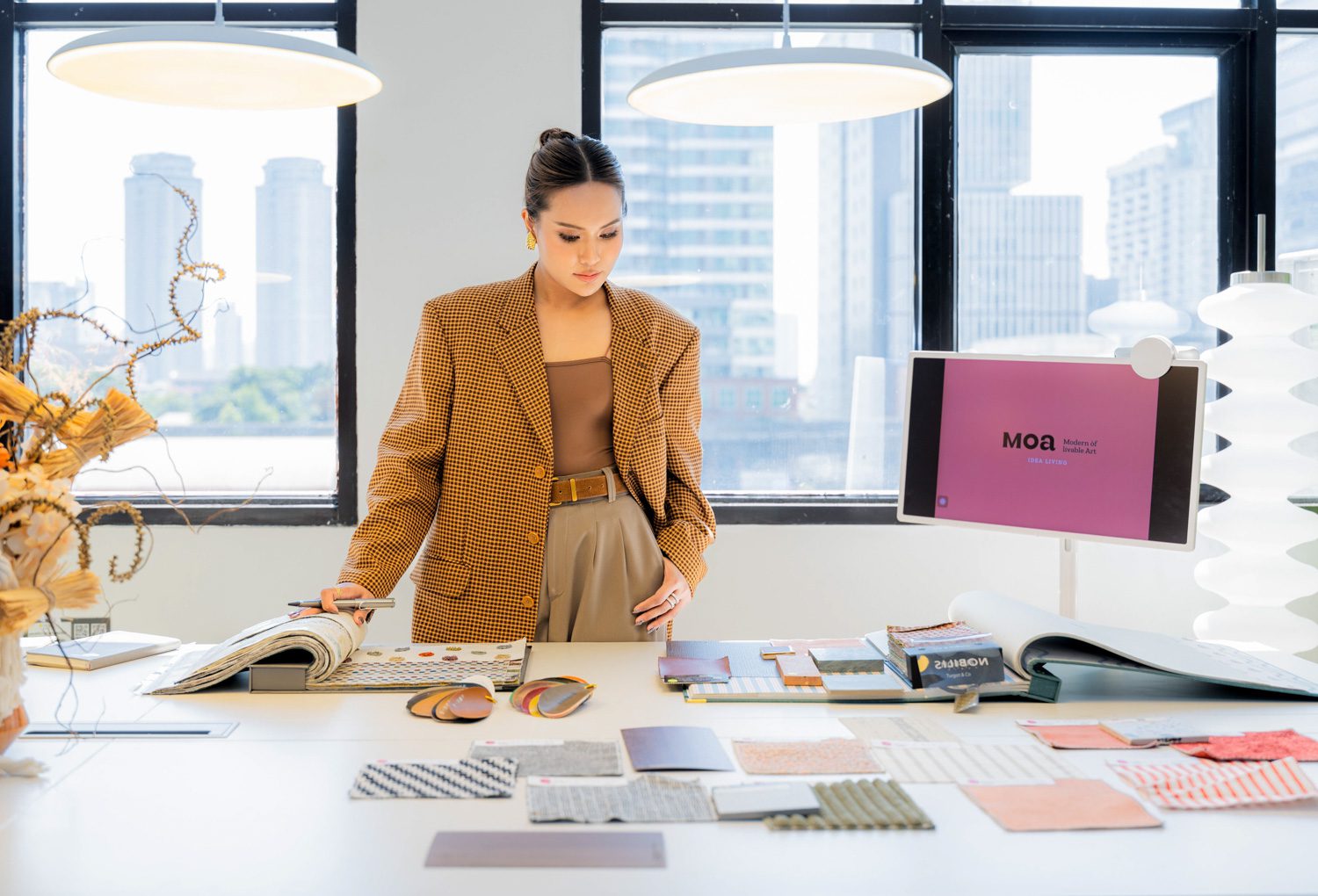
Alice Sakulma
art4d: What inspired you to pursue architecture and interior design?
Alice Sakulma: It all started with my father. He’s an engineer, and whenever he traveled abroad, he would always make a point of exploring construction materials. I remember his camera roll being filled with photos of building materials and construction techniques—many of which weren’t commonly seen in Thailand. Growing up around that, I naturally absorbed an interest in construction and architecture. But as I got older, I realized engineering wasn’t quite the right fit for me. I decided to study architectural design at INDA, Chulalongkorn University. At the same time, I’ve always loved fashion and the finer details that make something truly special, which gradually led me toward interior design. After graduation, I worked in architecture for a while, but it never felt like the perfect match. It wasn’t until the COVID-19 pandemic that I had the chance to explore interior design more deeply—and that’s when I knew I had found my true passion. Eventually, that passion evolved and became MOA Studio.
art4d: How would you define MOA Studio in your own words?
AS: MOA stands for ‘Modern of Liveable Art’ because, for me, art is always the foundation of design. But at the same time, I never lose sight of modernity, vibrancy, and functionality, creating spaces that are instantly recognizable as MOA Studio projects—designs that feel fresh, playful, and full of life while remaining highly functional.
In Thailand, minimalism and the motto ‘less is more,’ has long dominated the design scene. But at MOA Studio, we embrace the philosophy of ‘more is more’—not in an excessive way, but in a way that feels purposeful, intentional, and full of character. Our work is bold yet practical, stylish, contemporary, and always distinctive.
Every project begins with a strong concept that guides the entire design process. For example, we once designed a home with the idea: ‘Only the chicest people can live here’ (laughs). Color is one of my favorite tools—I love playing with rich tones like red, green, and brown, even using bold contrasting color pairings to create unexpected harmony. Materiality is just as important: I focus on textures, from rough to refined, and the intricate relationships between different elements. My approach blends contemporary influences with Mid-Century aesthetics, resulting in a refined yet playful take on classic design, full of unique details and personality.
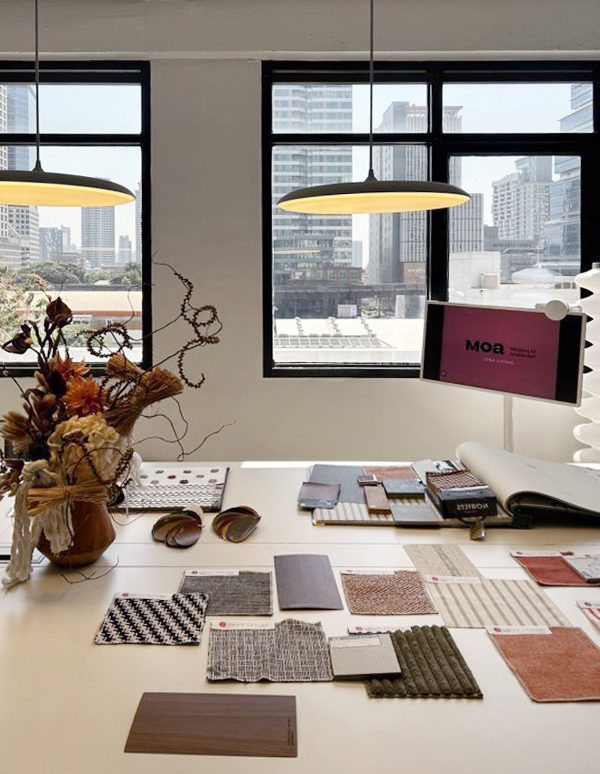
MOA Studio | Photo courtesy of MOA Studio
art4d: How do you approach working with clients and end-users at the start of each project?
AS: I always start by observing—getting a feel for the client’s personality, interests, and what they’re drawn to, while also considering how the space will be experienced by its actual users. I combine these insights with my own perspective on the site, and together, they become the foundation for the design. From there, we engage in a dialogue, exchanging ideas on direction, color palette, mood, and tone, with the goal of creating something fresh and original—something that hasn’t been done before. At the same time, the design must feel like a natural extension of both the client’s identity and MOA Studio’s distinct style.
I typically begin by sharing my initial vision for the space, a mental image or a visual concept that captures what I see in it. For example, with Rimshot, a project in Sukhumvit 24, the existing space had four structural columns and exposed pipes running along the walls and ceiling. Rather than seeing them as obstacles, I saw an opportunity to turn them into defining features. I imagined encasing the columns in concrete, sculpting them into mushroom-like forms, while keeping the exposed pipes intact to maintain their function. But instead of hiding them, I worked them into the design, transforming a constraint into a striking visual feature.
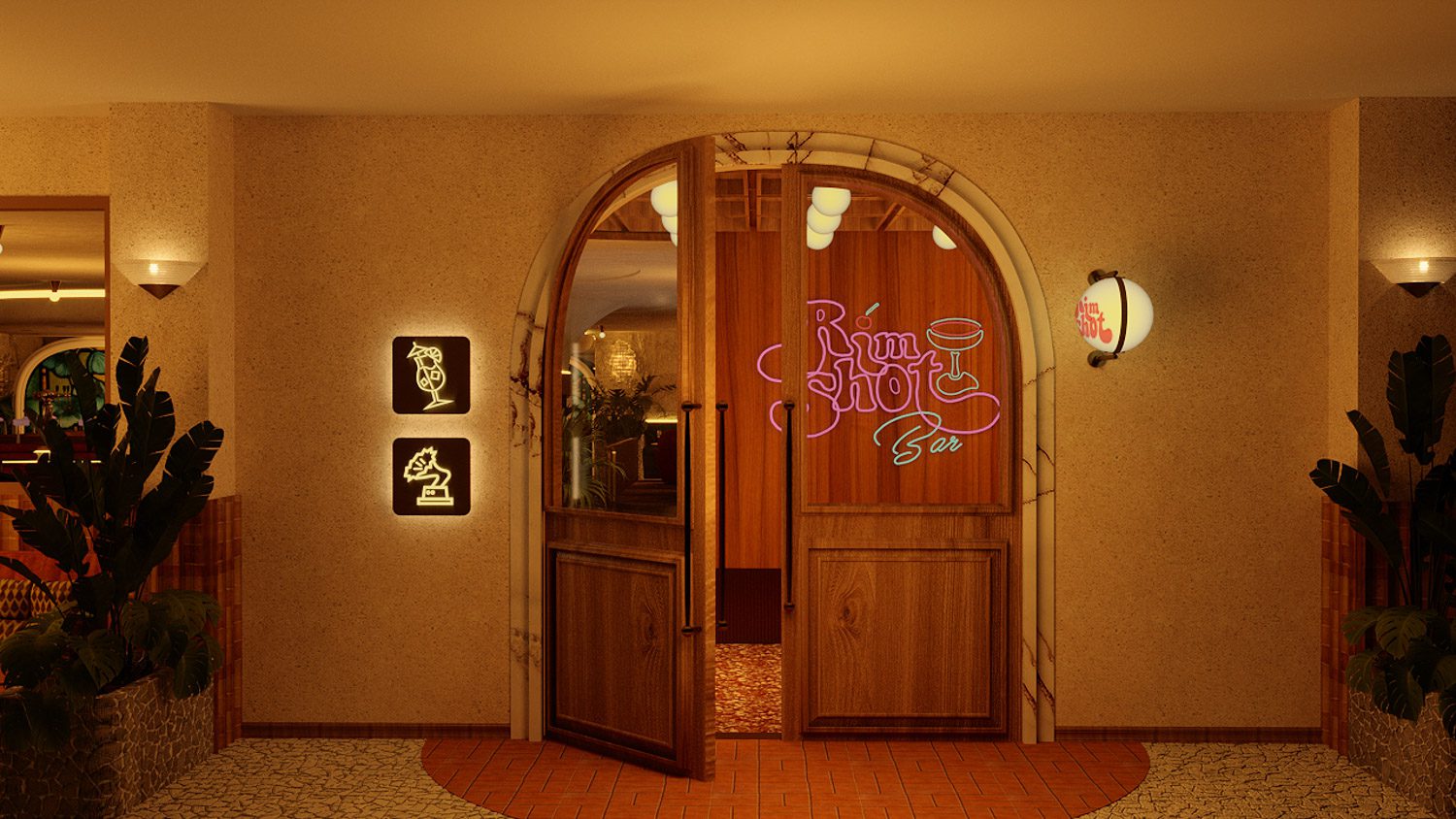
Rimshot Sukhumvit 24
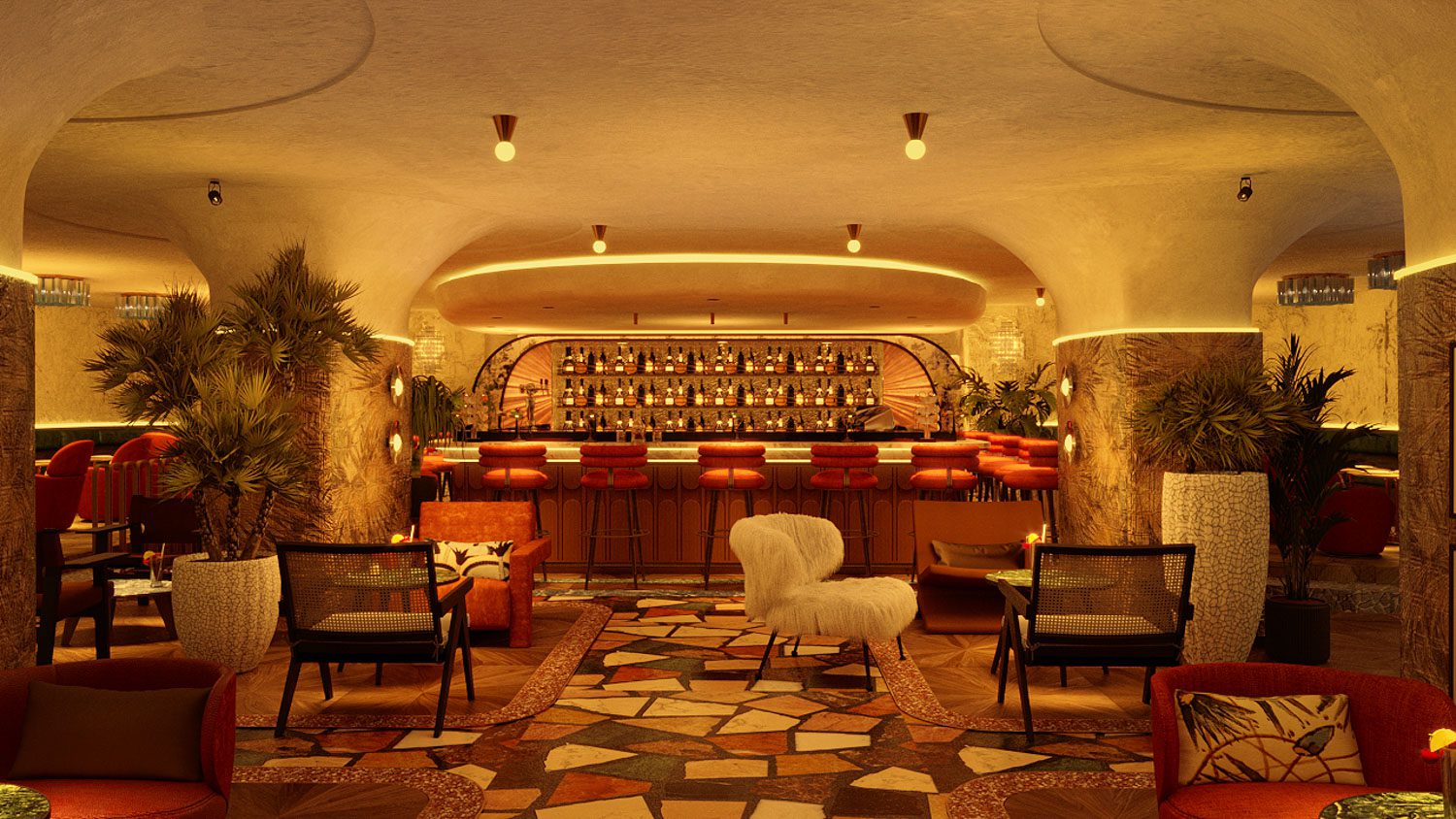
Rimshot Sukhumvit 24
art4d: In your view, what defines great interior design?
AS: At MOA Studio, functionality always comes first. A space must work intuitively and practically, and once that foundation is in place, we build on it with atmosphere and aesthetics—but without being confined by conventional rules. I’m always searching for fresh perspectives—through travel, experiencing different spaces, and studying the work of leading interior designers around the world. I love exploring new ways of designing beyond the familiar. Hotels and resorts, in particular, have been a huge source of inspiration, providing firsthand experiences that shape my approach—especially in the use of bold colors, spatial composition, and furniture pairings. Deep down, I’d love to see Thailand’s interior design scene become more ‘pop’—bolder, more playful, and more open to vibrant, unconventional ideas. I think that would make the industry so much more fun and exciting.
art4d: Has your experience as an architect influenced your approach to interior design?
AS: I’d say I’m fortunate to have worked in both architecture and interior design, it has given me a sharper understanding of what works and what doesn’t. As an interior designer, I’ve become more attuned to the finer details I might have previously overlooked as an architect. At the same time, my architectural background still shapes how I think about space, function, and flow. One interesting thing I’ve noticed is how people, especially those in the art world, often perceive my work through an artistic lens. They pick up on subtle artistic influences embedded in the designs—something I wasn’t always conscious of but now see as a natural result of my experience in both disciplines.
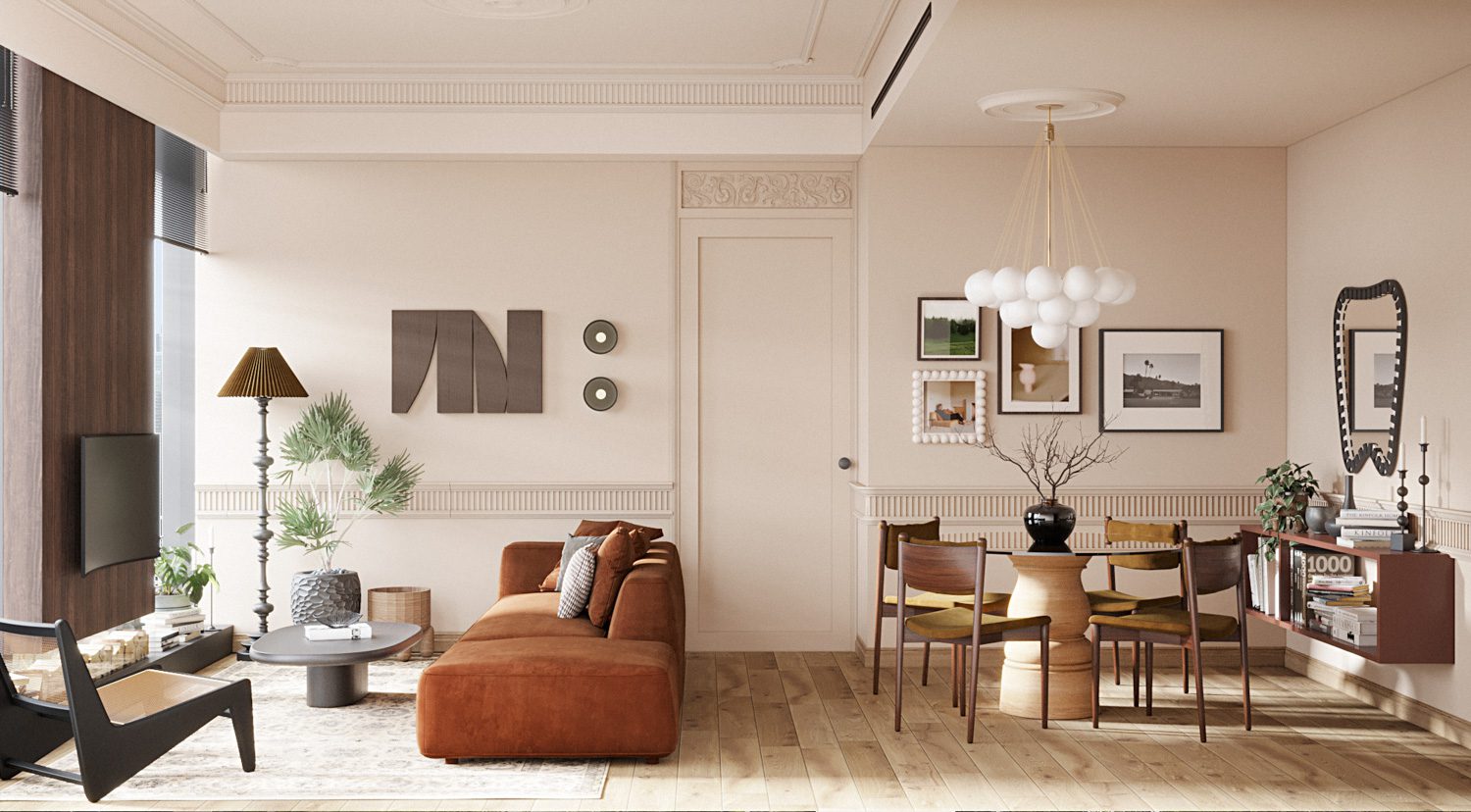
residential project
art4d: If you had to design a minimalist-style building, how would you approach the interior?
AS: Oh, I wouldn’t let minimalism consume me entirely! (laughs) But if that’s what the client envisions, I’d start by exploring ways to inject warmth and personality into the space, whether through bold stone textures, strategic pops of color, or unexpected material contrasts. It’s about balancing simplicity with vibrancy, ensuring the design doesn’t feel sterile or predictable. That said, I never impose my vision on clients. Instead, I offer alternative perspectives that bring a dynamic edge to the space—making sure it aligns with the client’s tastes while still carrying MOA Studio’s signature touch.
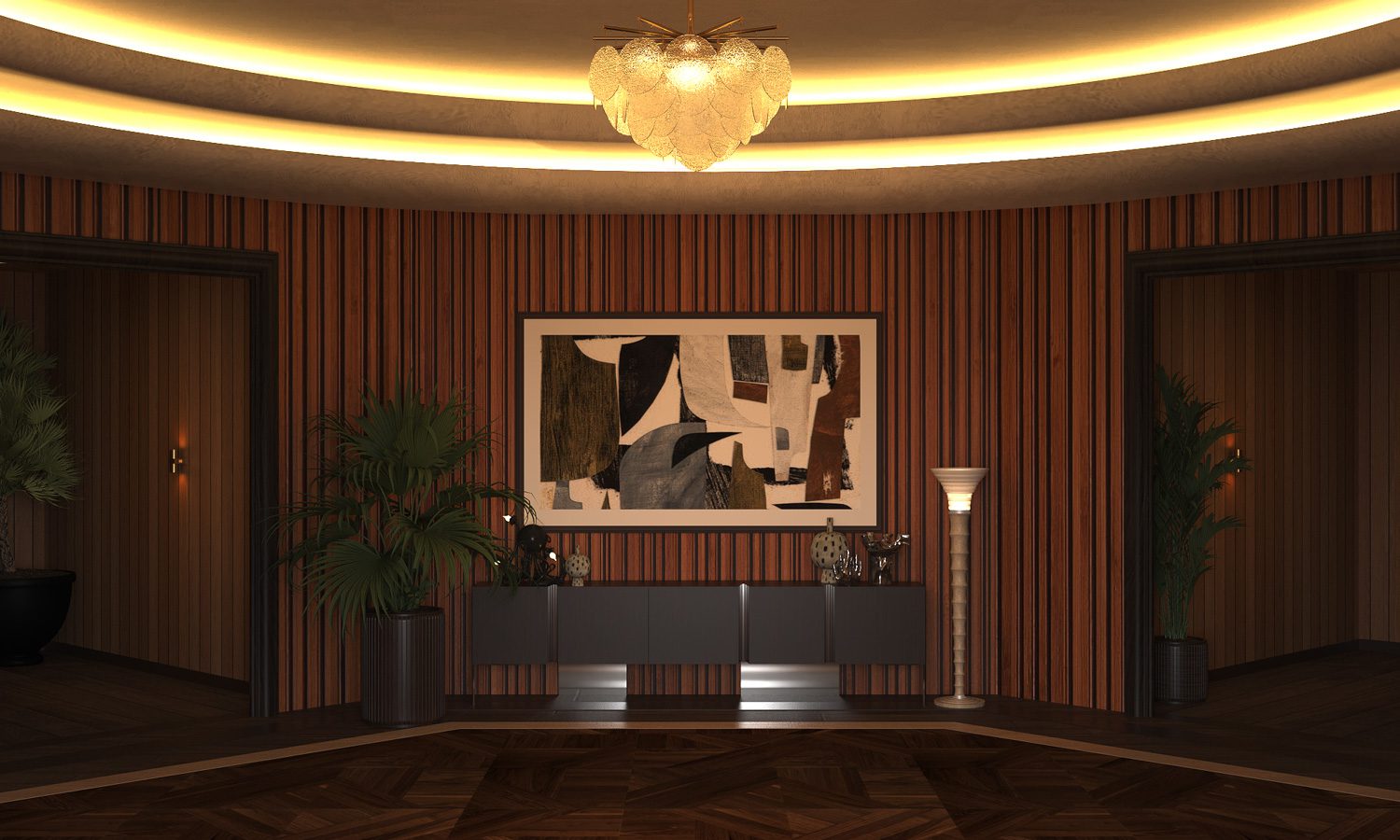
commercial project
art4d: Are there any materials you’re particularly interested in experimenting with or have used in a unique way?
AS: Thailand has so many beautiful local materials that often go underutilized. I love reinterpreting them, sometimes drawing inspiration from fashion to give them a fresh, elevated appeal. It’s a shame that many of these high-quality materials end up being exported and appreciated more abroad than at home.
If you look at MOA Studio’s projects, one material we often incorporate is terracotta tile, specifically sourced from Mae Taeng, Chiang Mai. Each hand-glazed tile has its own distinct character, ranging from deep to soft earthy tones. When assembled, they create a surface that feels naturally rich in texture and depth. Although these tiles take time to produce, as they’re made to order, the result is always worth the wait.
art4d: You often source materials from various places. How do you go about incorporating local Thai materials into your interior designs?
AS: There was one project where the homeowners—a LGBTQ+ couple—had a strong sense of style and a clear design vision. Their aesthetic was glamorous, sophisticated, and full of personality. As I explored the site and started shaping the design, I felt that beyond using gold accents, we could introduce a richer, more tactile element to elevate the space. That’s when I decided to work with hand-hammered brass sheets featuring intricate floral patterns, adding a dimensional, textured effect. The inspiration came from a brass artisans’ community in Ayutthaya. I believe that when working with local materials, it’s not just about using them—it’s about finding ways to enhance their value and bring out their uniqueness. After refining this idea, I brought it to my MOA Studio team, where we further developed it before integrating it into the final design of the home.
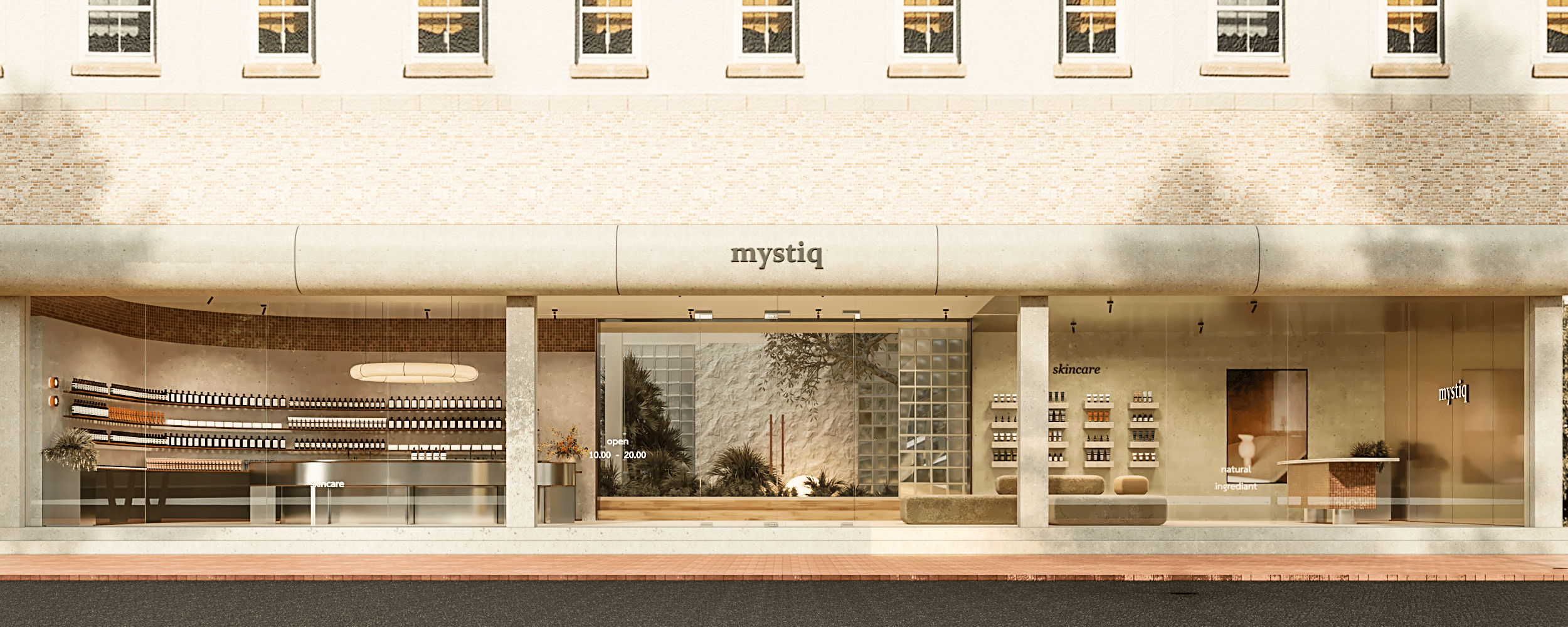
art4d: Where do you think your sense of aesthetics comes from?
AS: My family has had a huge influence on me. As a child, I spent a lot of time with my grandparents, who had a deep appreciation for collecting glassware, brass objects, and intricately detailed furniture. I remember their wooden cabinets, for example—they weren’t just plain wood; they had delicate circular inlays and fine detailing that made them feel special. Looking back, I think growing up around these objects without realizing their significance at the time made me more attuned to noticing the extraordinary in the everyday.
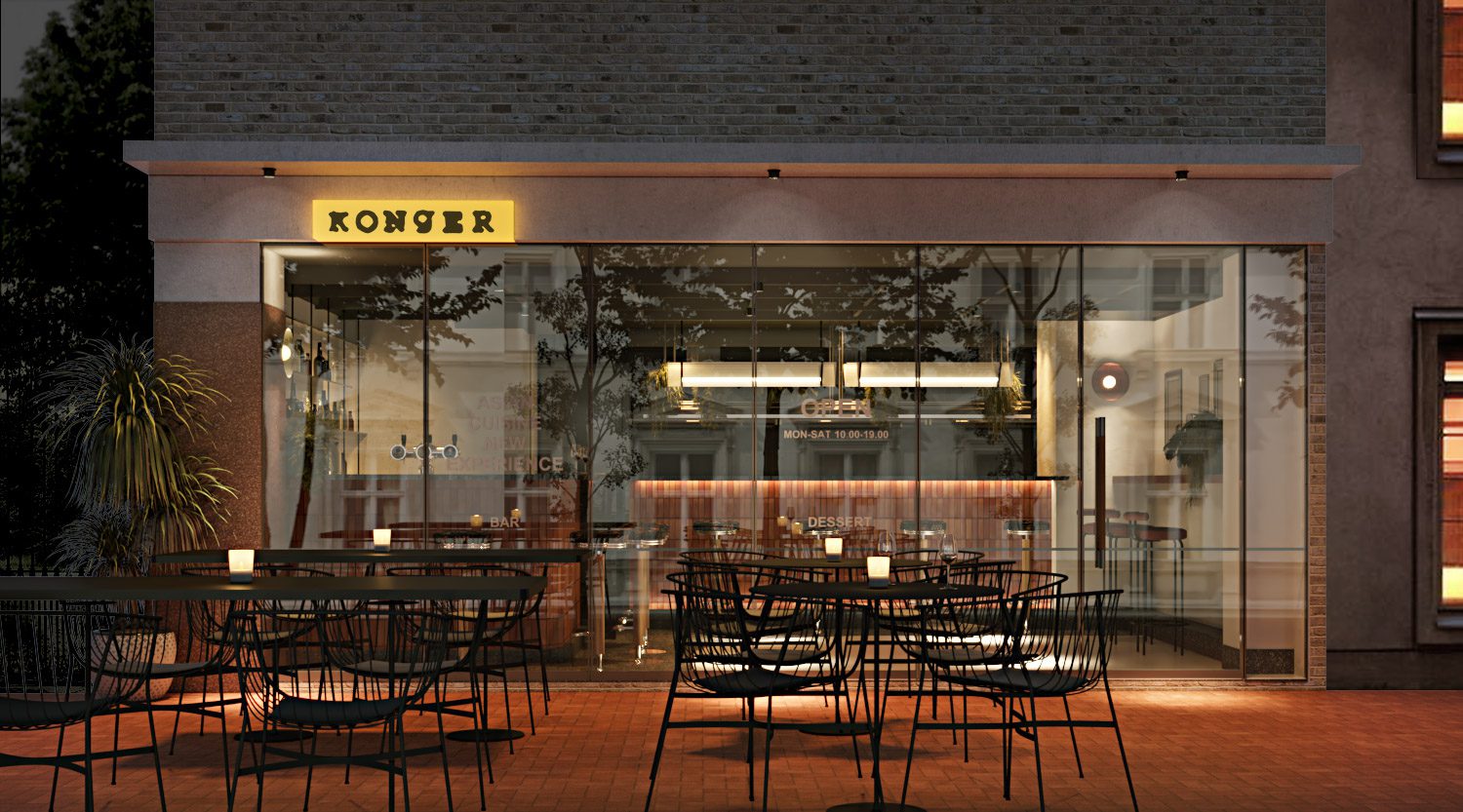
Konger Bar (Sydney, Australia)
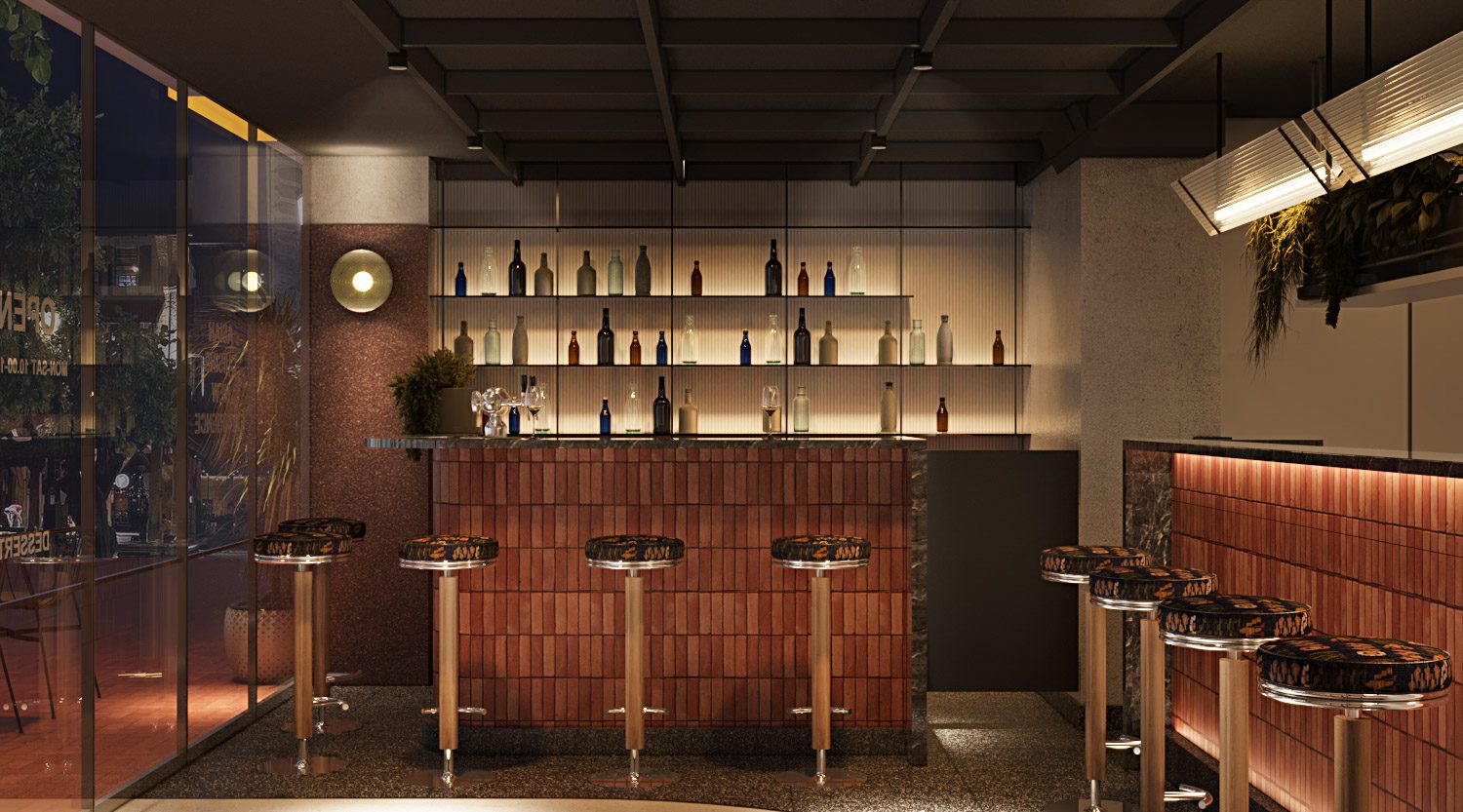
Konger Bar (Sydney, Australia)
art4d: What’s your vision for MOA Studio in the future?
AS: One direction I’m really excited about for MOA Studio is working on more bars and restaurants. Just talking about it gets me energized. I see these spaces as a playground for creativity, where design can push boundaries in so many dimensions. Bars and restaurants allow us to explore everything from modernity and speed to sensuality. At the same time, these projects give us the freedom to experiment with materials with unconventional textures and finishes, opening up endless possibilities.
Aside from my work with MOA Studio, I’m also expanding into new brands with the goal of transforming the studio into a more comprehensive and sustainable design business. One project I’m particularly focused on right now is MOJO, a lifestyle brand that prioritizes sustainability at every stage of production. We use recycled materials to create thoughtfully designed, everyday products such as house number plaques, kitchenware, and furniture. The idea is to offer pieces that complement MOA Studio’s clients, especially those looking for small, custom-designed elements that fit seamlessly into their spaces.
Another brand currently in development is MEdi, which specializes in melamine resin products that can be custom-cut and assembled into built-in or freestanding furniture. What sets it apart is our emphasis on durability, high-quality materials, and a balance of design and function—all at a reasonable price. Clients can either commission made-to-order pieces or make a selection from our pre-designed collections. Ultimately, my vision is for all these brands to work together and support one another. I’ve always believed that through the combined efforts of MOA Studio, my team, and the brands we’re building, we will, one day, be able to create something truly meaningful and impactful for Thailand’s interior design industry.
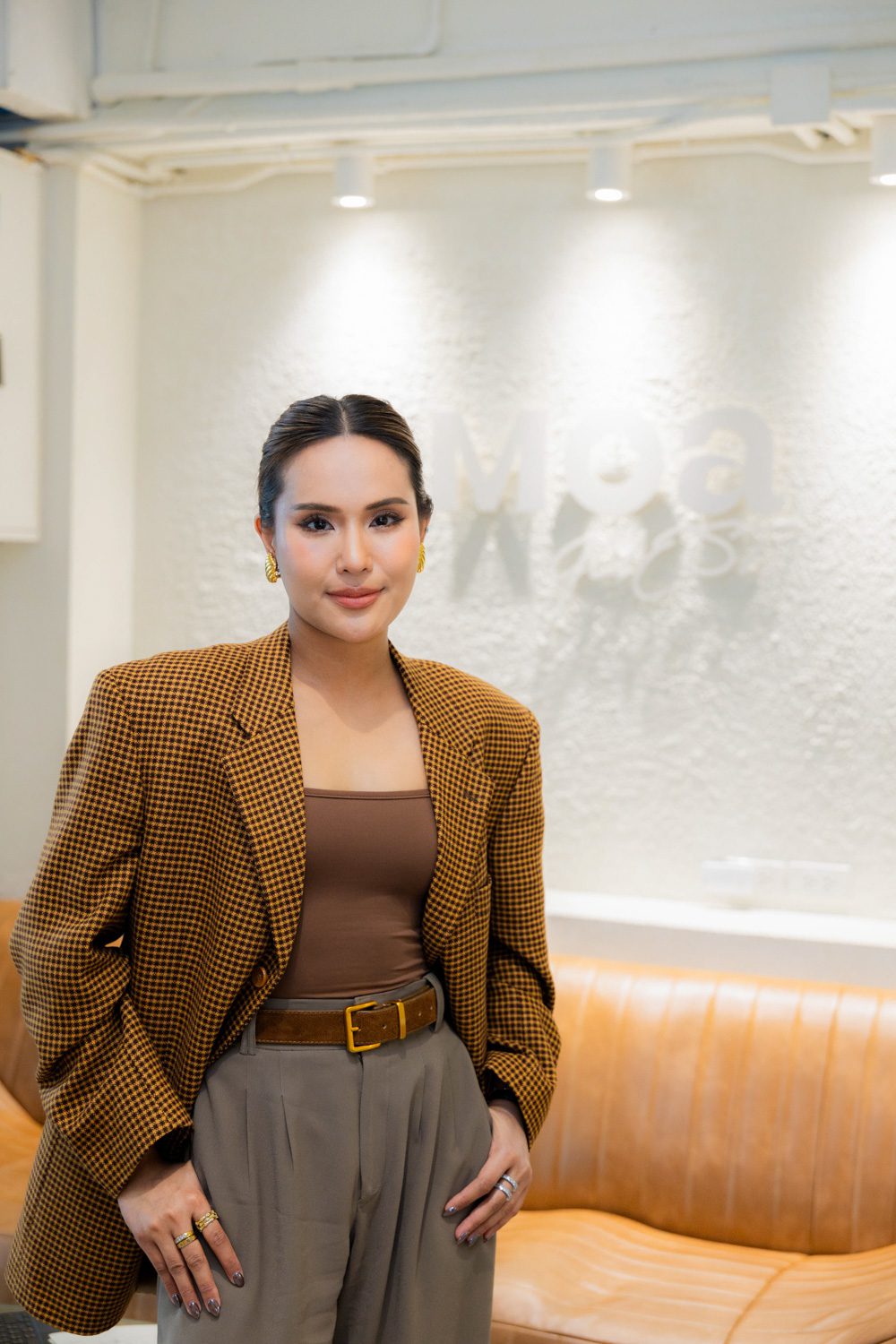
Alice Sakulma


